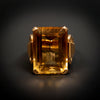We are proud to let you enjoy regional jewelry that has been collected over many years and with great passion and has thus been preserved for future generations. These pieces from our collection certainly deserve a next life with collectors and with people with a great sense of beauty, taste, culture and tradition. Perhaps with you?
Our legacy
When you think of typical Dutch jewelry, your thoughts quickly turn to 'our' regional jewelry. They represent a rich and very diverse heritage from the rural and fishing traditions of our society. From gentlemen and small farmers, from shipowners and fishermen, but especially from their women! And city dwellers also enjoyed participating in this adornment and splendor.
This tradition flourished, especially in the nineteenth and early twentieth centuries, and produced unique jewelry. Such jewelry, especially if you see a number of them together in a collection, represents a unique and rich historical Dutch cultural heritage for which there is rightly a lot of interest and appreciation beyond the country's borders.
Distinguish between social class and religion
These gold and silver jewelry, sometimes set with diamonds, were worn with pride and on various occasions. For example, the wealth of the wearer could be read from this: a gold hood could only be worn (in North Holland) if one owned more than 40 cows; a silver hood was already possible for 25 cows. The number of gracefully swimming swans (one, two or even three), deeply engraved in the Walcheren forehead needle, had the same function, namely to indicate distinctions according to social class and wealth. The density, thickness and material of the windings on forehead needles on the Zeeland and South Holland islands also represented higher or lower prosperity. And for the lesser man or the narrow wallet, there were always copper, brass and iron, right?
In addition to differences in wealth, differences in religion (Protestant or Roman Catholic, as in the Beveland hoods and earrings) and in marital status (married or not) were also expressed through the jewelry itself and in the way it was worn. Was the forehead needle inserted from the left or right? Its specific meaning was clear for our own environment! And those who were in (full or half) mourning showed this by, for example, exchanging the gold and red coral jewel for silver, garnet and/or jet. Such social codes were almost always strictly enforced!
Regional differences
Regional differences are also clearly reflected in these pieces. Not everything was worn generally or nationally. For many pieces, 'the connoisseur' can immediately indicate the origin in terms of region, province ('typical Brabant') and sometimes even in terms of location ('Arnemuiden', 'St. Joos- en Nieuwland', etc.). Gold jewelry with pearls usually comes from coastal areas and places (dune areas, Scheveningen). Usually the pieces specific to a region or even place were also made by a master there, although there were also centers, such as Schoonhoven in particular, from which the entire country was served. Zeeland, North Brabant, the northern provinces, and North and South Holland have a particularly rich history in this respect. But Twente, the IJssel region and the extensive 'Kampereiland' (from Elburg to Meppel) also deserve mention.
Practical function and for decoration
'Fashions' could also be detected in regional jewellery; ear irons and caps that changed shapes over time; pendants whose length could vary over time; jewels that lost their popularity, temporarily or otherwise. But of course a lot was also passed on from generation to generation and thus remained 'in the picture'.
Many pieces of jewelry first had a very practical and everyday function: think of the throat buttons, the hat pins, the apron or tassel hooks, the shoe buckles and trouser pieces. But most were purely for decoration, such as the enormous gold earring pendants, sometimes inlaid with colored stones, of the Vlaardingen shipowners' wives, the incomparable cushion, change and mirror bells from Tholen and Noord-Beveland, the Brabant and Zeeland breast sows, the Zeeland 'mourning bells', the commonly worn bonnet bells or the renowned and popular Frisian, West Frisian and North Holland 'boat chains'. Sometimes they had both functions, such as the gold earrings of the fishermen around the Zuiderzee (the Urker and Volendammer 'creoles') and in Zeeland (Tholen, Ierseke). Earrings, intended for decoration but at the same time as 'funeral insurance' in case the fisherman who drowned at sea were to wash up on a foreign coast.
Dutch craftsmanship
What is striking is the unparalleled fine technique of the 'wire and cantilla work' in 14 and 18 carat gold and silver that Dutch goldsmiths have managed to produce with great craftsmanship (and sometimes even with the help of children's fingers!).













